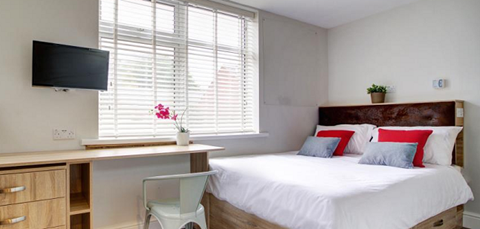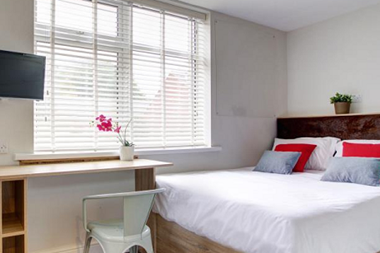When it comes to the student accommodation market, the paradigm is that investors want something new, purpose built and with scale.

Certainly, purpose-built student accommodation (PBSA) remains the focus for large investors from home and overseas, but the Cinderella of the sector, traditional houses in multiple occupation (HMOs), are generating new interest and yield compression.
Consisting mainly of converted former family homes, HMO student accommodation was historically the preserve of local landlords who had built up large portfolios over 20 to 30 years. But new providers have recognised a gap in the market between relatively expensive-to-rent PBSA and cheap, but poor-quality, HMO student accommodation.
To fill it they recognise the need to offer professionally run, high-quality accommodation with digital technology to improve customer and management services and economies of scale to reduce operating costs.
This business model has attracted large-scale players with a national, not local, outlook. For example, Student Cribs has raised substantial funds from private equity. In autumn last year, it raised a further £200m-plus from institutional investors to double its portfolio.

So what has attracted large investors to the student HMO sector? Ironically it seems tighter regulation plus high rents in PBSA have reassured larger investors that this alternative sector can deliver higher returns.
The RICS too has assisted the HMO market by giving guidance to valuers for the first time through its note, The Valuation of Buy-to-Let and HMO Properties, 1st Edition, published late last year.
The guidance note clears up a number of valuation misconceptions from the past that troubled lenders in particular. In turn, this has encouraged lenders to adopt a more confident attitude to HMOs as loan security.
Investors seize the initiative
In the future, further tougher licencing and regulation of HMOs is expected, but the introduction of additional mandatory licencing for smaller HMOs has been delayed. However, this has not stopped investors from seizing the initiative - there is a large student market to play for.
There are 1.75 million full-time undergraduates in the UK with around 400,000 renting in the HMO market. UK students tend to move out of halls in the second and third year of their degrees. Most form groups of four to seven friends and enter the private market. HMO properties are not only cheaper, but landlords have adapted their offerings to provide inclusive rents and more flexible tenancy lengths.
With the government having lifted the cap on university numbers, demand is likely to grow. However, HMO supply is limited. Against this backdrop, investors in HMO student accommodation can achieve attractive yields, beating those found in the purpose-built sector.
Do you have a stake in the UK university sector? Make sure to book your place for Property Week’s Student Accommodation Conference & Awards now
For sure, the purpose-built sector is still attracting large investment and is estimated to pull in well over £5bn this year. But there are challenges ahead. Brexit could result in fewer overseas students. In the case of UK students, debt and affordability are increasingly uppermost in their minds.
Demographic trends indicate UK student numbers may decline over the next few years; however, student housing is likely to remain in short supply. For investors who want to hedge their bets, HMO investment at least offers an ‘exit’ by conversion back to family homes should market conditions dictate, an option that is usually not available with PBSA.
There is a large market for quality student HMOs at affordable rents and demand for this type of accommodation will be more resilient with squeezed student budgets. We’ve noticed an increasing trend of local landlords planning for retirement and selling up. The combination of higher yields, sector innovation and more manageable risk is already proving irresistible to investors.































No comments yet